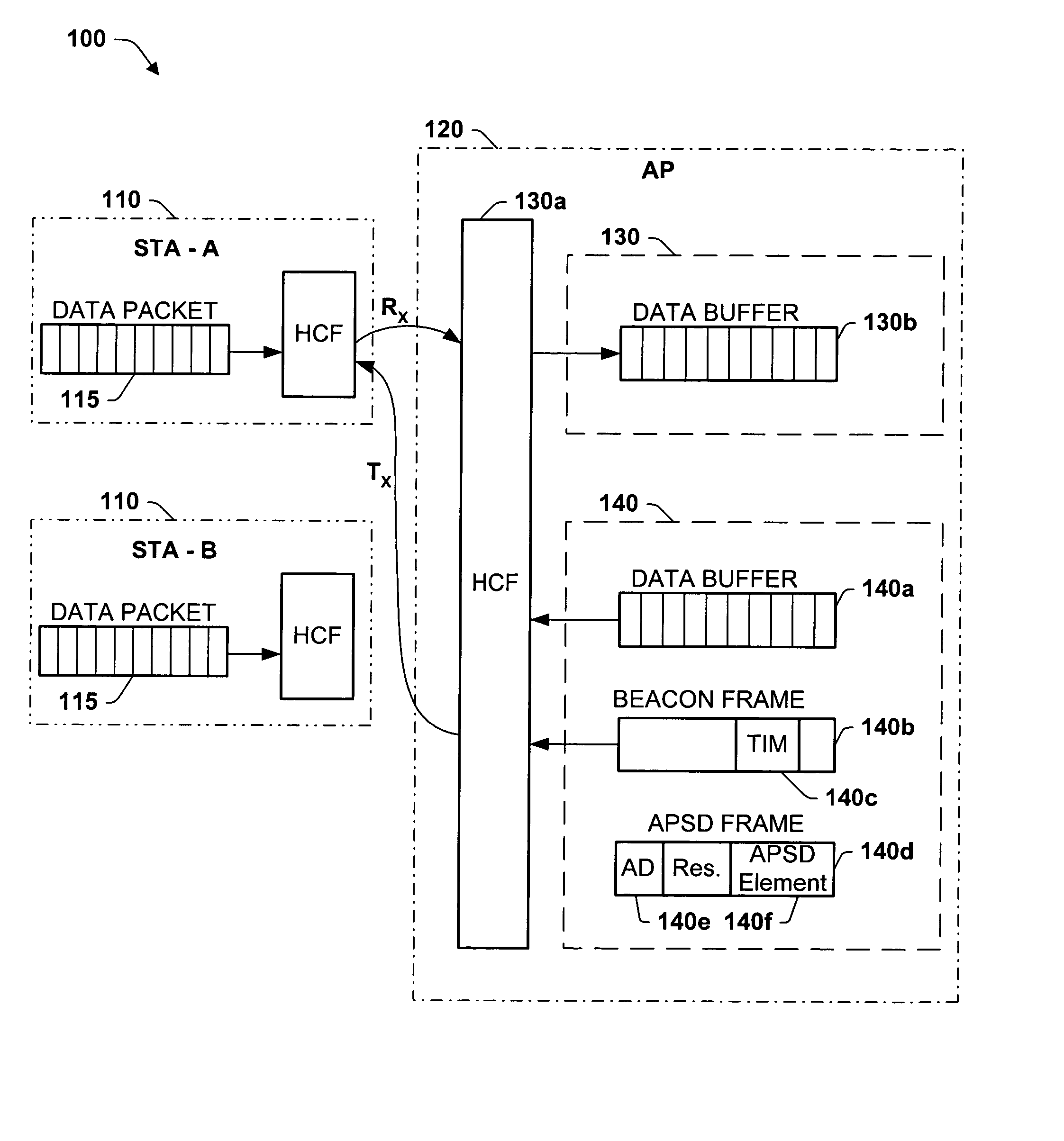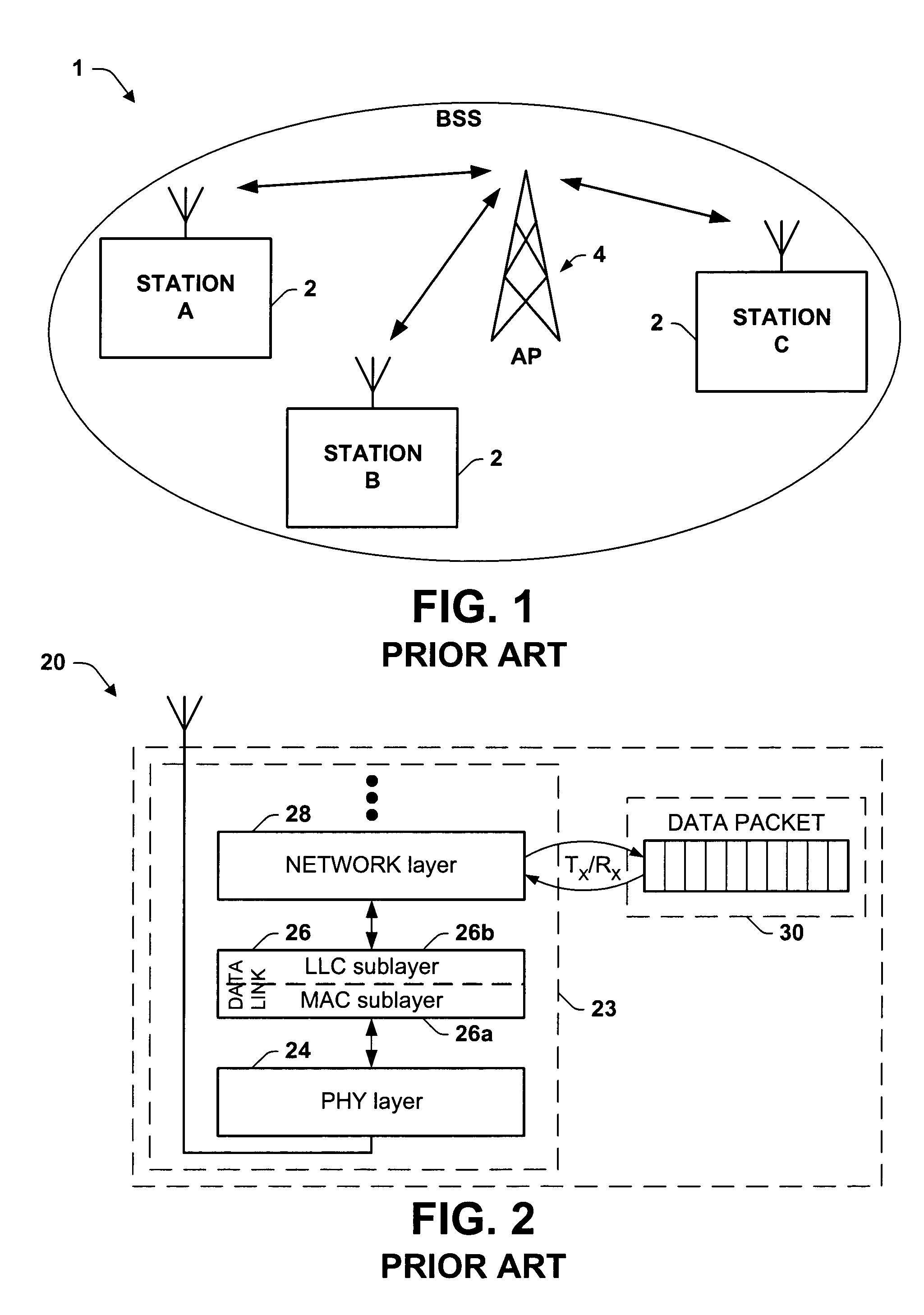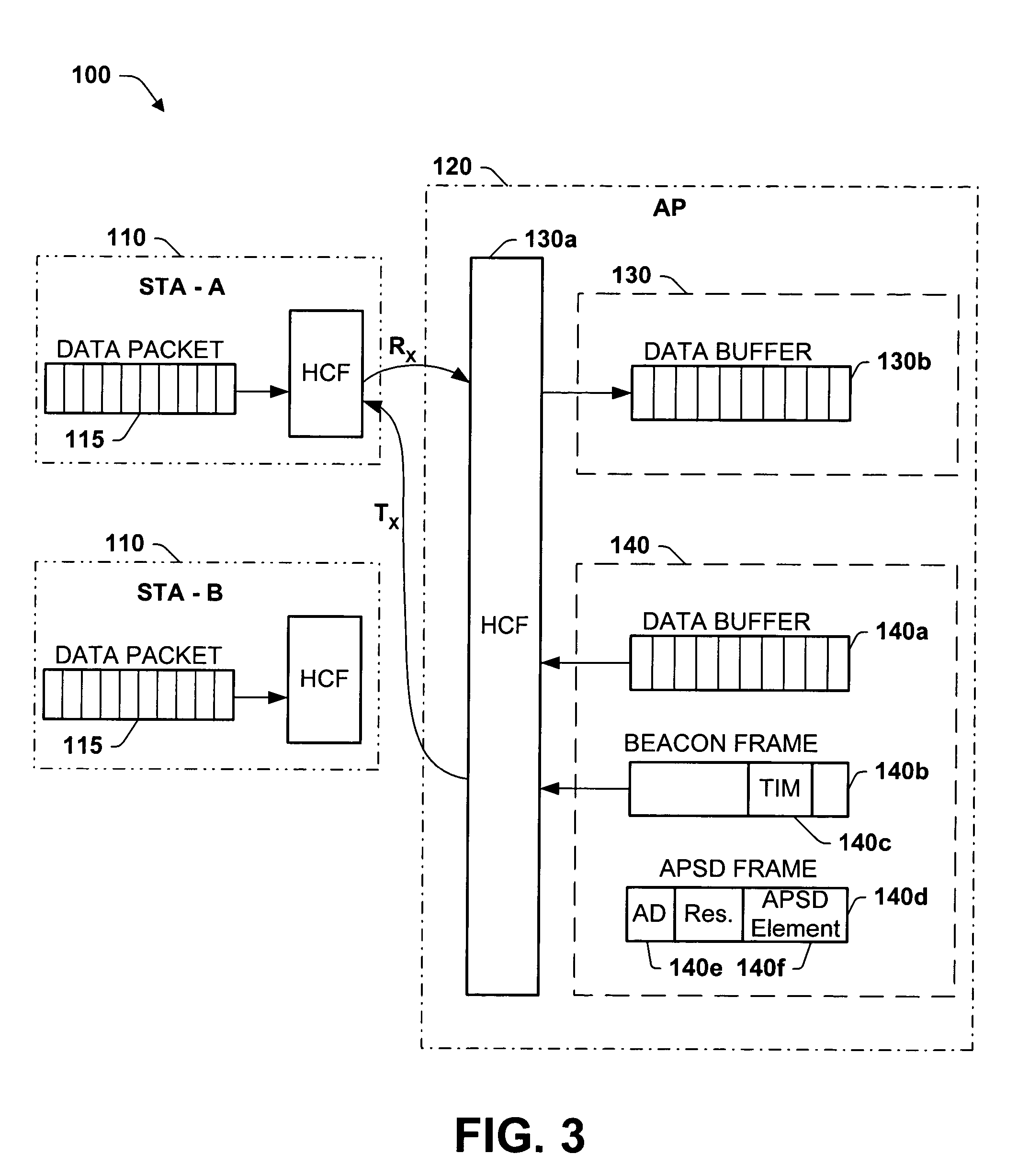Optimal power saving scheduler for 802.11e APSD
a power saving scheduler and scheduler technology, applied in power management, sustainable buildings, high-level techniques, etc., can solve problems such as power consumption inevitably becoming a bottleneck to its wide deployment, data transmission is susceptible to interruption, and data streaming in a contiguous fashion
- Summary
- Abstract
- Description
- Claims
- Application Information
AI Technical Summary
Benefits of technology
Problems solved by technology
Method used
Image
Examples
Embodiment Construction
The present invention will now be described with reference to the attached drawings, wherein like reference numerals are used to refer to like elements throughout. The invention relates to a hierarchical scheduling architecture as a power savings mechanism in a wireless network in which a receiving power consumption calculation and prioritization algorithm is utilized in association with the Automatic Power Save Delivery APSD frame and protocol of 802.11e.
There are two power saving mechanisms in the IEEE 802.11e draft, namely Automatic Power Saving Delivery (APSD) and Schedule Element. The later mechanism is mainly a component of the QoS functionality while, as suggested by the draft itself, permitting additional power saving possibilities. Since the Schedule Element mainly targets at periodic traffic, it is then mainly a QoS schedulers' job to specify the service interval during which a station may go to sleep.
A station capable of APSD and currently in the corresponding mode w...
PUM
 Login to View More
Login to View More Abstract
Description
Claims
Application Information
 Login to View More
Login to View More - R&D
- Intellectual Property
- Life Sciences
- Materials
- Tech Scout
- Unparalleled Data Quality
- Higher Quality Content
- 60% Fewer Hallucinations
Browse by: Latest US Patents, China's latest patents, Technical Efficacy Thesaurus, Application Domain, Technology Topic, Popular Technical Reports.
© 2025 PatSnap. All rights reserved.Legal|Privacy policy|Modern Slavery Act Transparency Statement|Sitemap|About US| Contact US: help@patsnap.com



